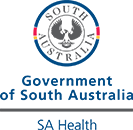Rheumatoid arthritis
Key facts
- Rheumatoid arthritis (RA) is a chronic (ongoing) condition that can cause pain, stiffness and swelling in your joints.
- RA is an autoimmune condition, where your immune system attacks the tissues lining your joints.
- Starting treatment as soon as possible helps avoid joint damage.
- You can slow down damage to your joints and treat pain with medicines, exercise and lifestyle changes.
What is rheumatoid arthritis (RA)?
Rheumatoid arthritis (RA) is a chronic (ongoing) condition that can cause pain and swelling in your joints.
RA is an autoimmune condition, where your immune system attacks the tissues lining your joints. When this happens, some joints become inflamed, swollen and painful.
RA usually affects your smaller joints, such as the joints in your hands and feet. But it can also affect other joints, like your:
- wrists
- elbows
- ankles
RA can also affect other parts of your body, such as your skin, eyes, lungs, heart or kidneys.
RA is more common in females than in males. It's usually diagnosed in people aged 40 to 60 years.
What are the symptoms of RA?
The symptoms of RA are having some joints that are:
- painful
- swollen
- stiff (joint stiffness may last for longer than one hour after you wake up in the morning)
- warm and tender to touch
Usually, the same joints are affected on both sides of your body. For example, you may have pain and swelling in the joints of both hands or both feet.
Some people with RA have flare ups — times when their joints feel particularly sore. This can be followed by months, or even years, with few symptoms. Other people may have symptoms that slowly get worse over time.
What causes RA?
The cause of RA is not known.
Your risk of RA is higher if:
- someone in your close family has RA
- you smoke
When should I see my doctor?
If you notice symptoms of RA, or you are concerned that you may have RA, you should see your doctor as soon as possible.
How is RA diagnosed?
Your doctor will ask questions about your symptoms and examine your joints. A diagnosis of RA can be made from your medical history and examination.
Tests may be recommended to help confirm the diagnosis and see how bad the inflammation is.
Your doctor may recommend blood tests to check for inflammation. The tests may include:
- rheumatoid factor (RF)
- anti-cyclic citrullinated peptide (anti-CCP)
- erythrocyte sedimentation rate (ESR)
- C-reactive protein (CRP)
Your doctor may also recommend x-rays or other scans, such as ultrasound scans.
If your doctor thinks that you may have RA, they will refer you to a rheumatologist (a doctor specialising in arthritis).
How is RA treated?
There is no cure for RA. But there are treatments available to help with your pain and stop further damage to your joints.
Healthcare professionals that can help with RA can include:
- your doctor
- a physiotherapist
- a dietitian
- a psychologist
- an occupational therapist
- a rheumatologist
Medicines for RA
Your doctor may recommend a combination of medicines.
Pain-relief medicines your doctor may prescribe include:
Disease modifying antirheumatic drugs (DMARDs) are a group of medicines that can relieve your symptoms and reduce damage to your joints. Doctors usually recommend early treatment with these medicines.
There are different types of DMARDs, including:
- conventional synthetic DMARDs, such as methotrexate
- biological DMARDS
- targeted synthetic DMARDs
Corticosteroids, such as prednisolone, are medicines that can help manage pain and stiffness during flare-ups. Corticosteroids are available as tablets. They can also be injected into your joint to reduce pain.
Other treatments
Omega-3 is a type of fat naturally found in foods such as certain fish. You can take fish oil supplements that contain omega-3 to help with pain and inflammation.
Some other treatments that may help reduce pain include:
Ask your doctor whether these treatments may be helpful for you.
Diet and exercise
It's important to maintain a healthy diet if you have RA. This includes:
- eating lots of fruits, vegetables and wholegrain cereal food, such as brown rice or oats
- eating foods that contain omega-3 fats
- avoiding fatty, sugary or very salty foods
Exercise can also help improve your functioning, maintain a healthy weight and benefit both your mental and physical health.
Choose activities that you enjoy and that are low impact for your painful joints. Talk to your physiotherapist about how to start an exercise program that is right for you.
Home adjustments
You may also need to make changes at home to help you manage daily tasks like cleaning or gardening.
An occupational therapist can help you make changes if pain or joint stiffness makes certain tasks hard to complete. They can recommend tools to reduce strain on your joints, such as:
- long-handled dustpans so you don't need to bend over
- book holders to reduce the strain on your hands and wrists
An occupational therapist can also give you personalised advice on how to avoid falls and keep safe at home.
Can RA be prevented?
You cannot prevent RA because the cause of the disease is not known.
Quitting smoking, or never smoking, will reduce your risk of developing RA.
Complications of RA
Some complications of RA are:
- an increased risk of coronary heart disease
- pulmonary fibrosis (a type of lung disease)
- carpal tunnel syndrome
You might find that having RA sometimes makes you feel frustrated and upset. Pain can cause poor sleep, which can also make you feel down.
Discus your feelings with friends and family and explain to them how they can support you. This may help you feel better and reassured that help is available.
If you are struggling with a low mood or not managing to sleep, your doctor will be able to support you and work with you to build a plan to help.
Resources and support
Arthritis Australia has information on RA, including in languages other than English. You can also call Arthritis Australia on 1800 011 041 for information and support.
You can also call the healthdirect helpline on 1800 022 222 (known as NURSE-ON-CALL in Victoria). A registered nurse is available to speak with 24 hours a day, 7 days a week.
Learn more here about the development and quality assurance of healthdirect content.
Last reviewed: November 2023






-c25236.png)











